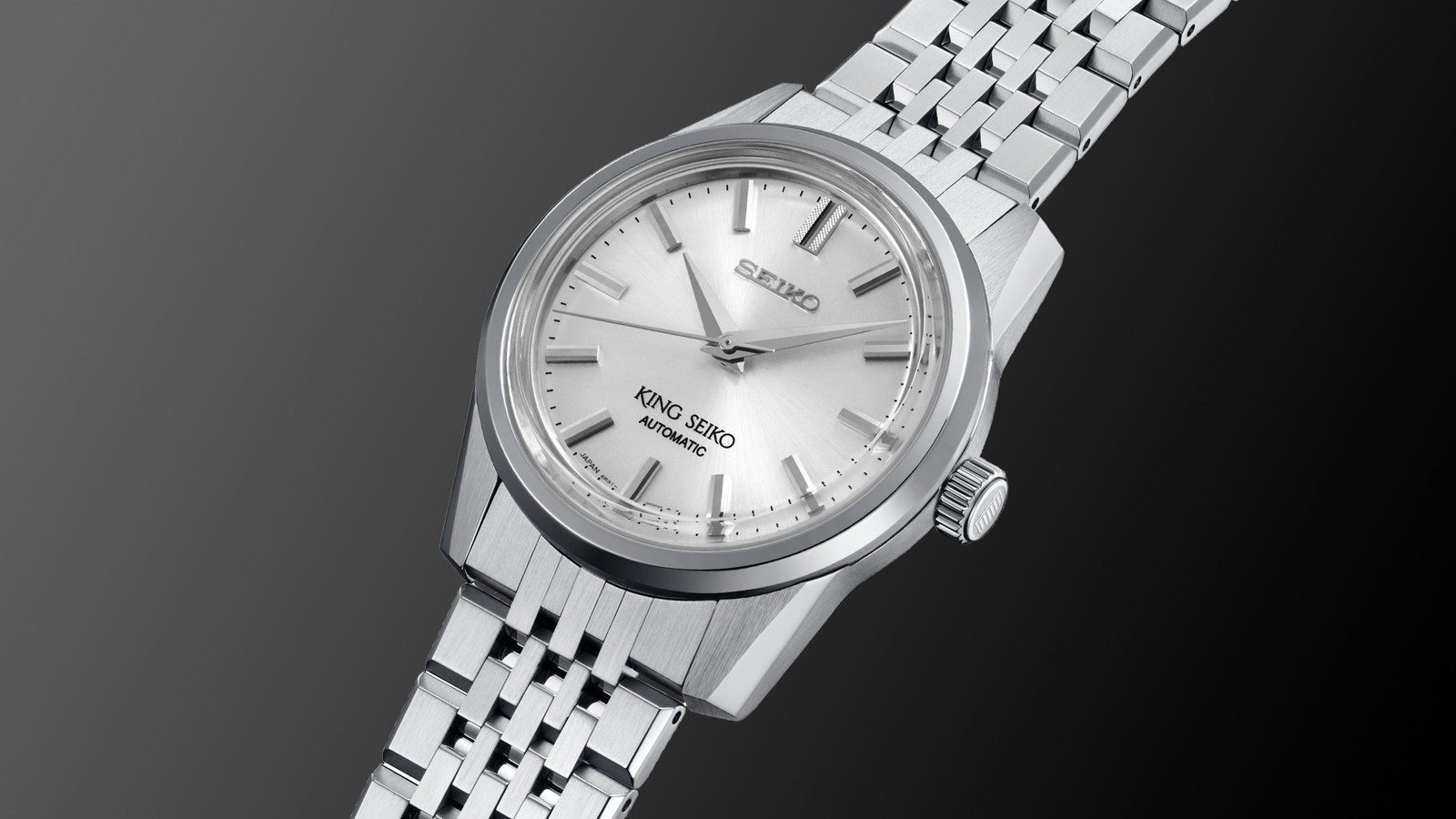The “Grammar of Design” is spoken about in hushed tones amongst some watch circles. Originated by Seiko designer Toro Tanaka in the 1960s, the Grammar of Design was a series of principles based around beauty and legibility that elevated Seiko’s higher-end pieces to bold heights. Even today’s vaunted Grand Seiko pieces continue to hearken back to Grammar of Design principles. The 44GS is considered the most faithful of these designs; introduced in 1967, it features flat, highly polished mirror surfaces that give off a bold yet elegant feel. Several years earlier, however, Grand Seiko’s internal rival, King Seiko, introduced a 44KS case that was by many accounts the first true manifestation of the Grammar of Design, and the real OG for these principles that have survived for six decades and counting. In late 2020, Seiko unveiled the KSK SJE083, a $3,300 limited reissue of that original 44KS model. Now, just over a year later, Seiko has announced five new, full-production King Seiko models at a much lower price point.
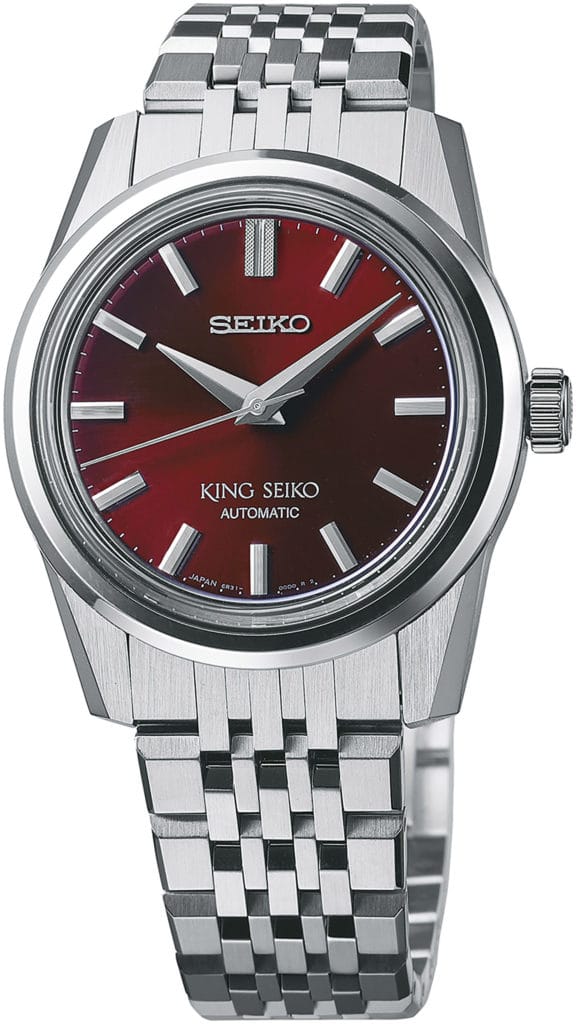
At 37mm in diameter and 12.1mm in thickness, the new King Seiko should provide a fairly modest wrist presence. It’s very similarly sized to the original KS 44-9990, which was a hair smaller but also about 2mm thinner, as the vintage model used a hand-wound movement. Still, the watch provides a bit of flash coming from beefy lugs that span 43.6mm with a sharp downward angle. Further adding a little more (albeit quite reserved!) spice are the dials: while one of the four models sports a silver sunburst dial that is very faithful to the OG, the other four, sunburst dials in charcoal, brown, and oxblood, and a boldly brushed silver dial, are modern touches that liven up the model and form a bridge to current Presage models.
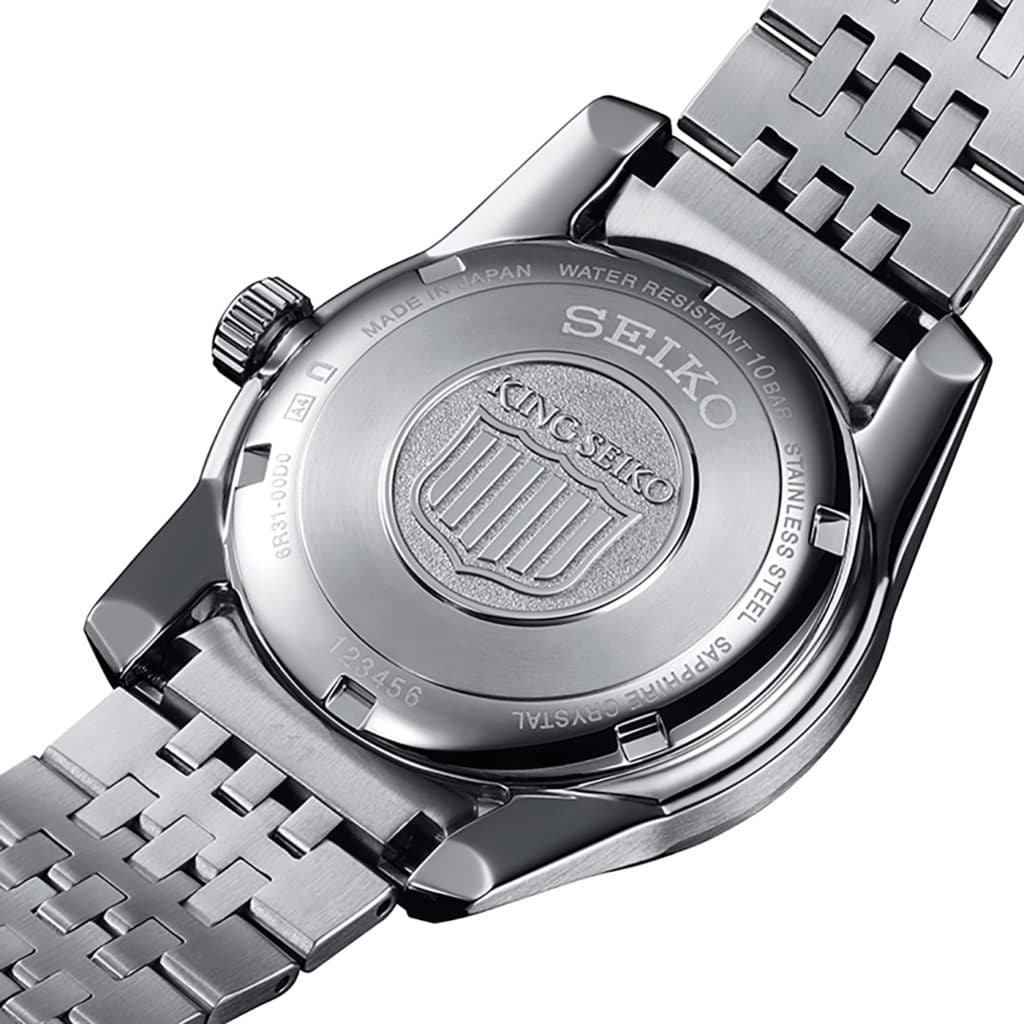
It’s a bit tough to understand what Seiko is trying to do with these new models. When King Seiko was introduced in 1961, it was intended to compete head-to-head with Grand Seiko, which premiered a year earlier. The reissues are based on the KSK, or KS 44-9990, which featured a hand-wound movement with stop seconds (that second “K” refers to Kisei-Tsuki, or “stop seconds”). It also sported a dial with chamfered indices including brilliantly faceted double indices at 12 o’clock, polished dauphine hands, and a case sporting thick, boldly chamfered lugs with a fine, flat polish of the type that would eventually be known as zaratsu. Many of the KS 44-9990’s design elements live on in the best of Seiko and Grand Seiko’s designs today, and the new King Seiko does a nice job with both the dial and hands to revive this legacy.
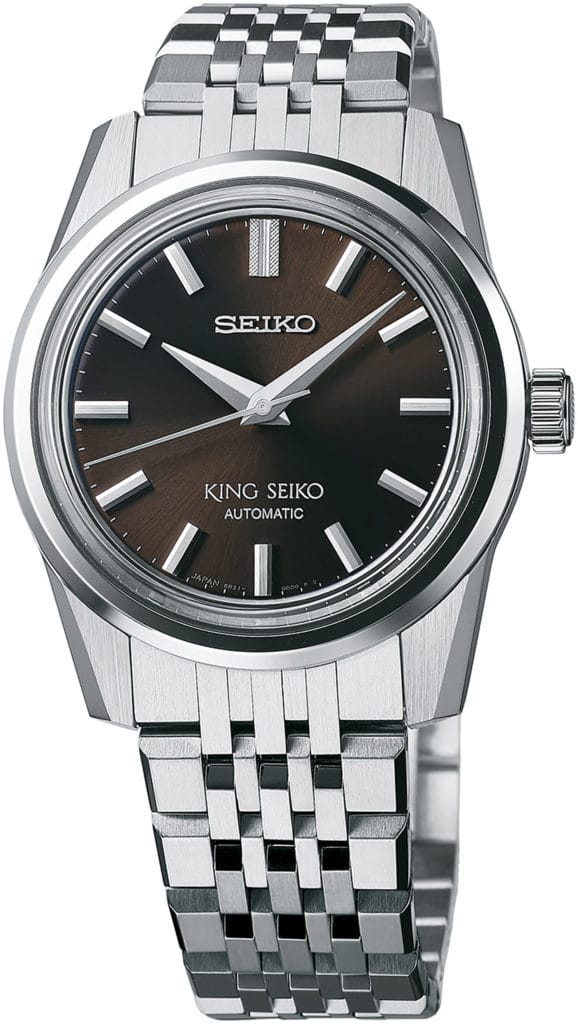
Disappointingly, the case doesn’t quite evoke the same vintage charm. While an updated 10 bar water resistance is certainly welcome, it’s a bit bewildering why the chamfer on the lugs was angled in such a blasé fashion. Instead of the original model’s bolder design, that left the polished facets coming to sharp triangles (a look that was nicely preserved in last year’s KSK reissue), the new models have much more conventional feel about them. They’re still fairly bold in their way, but so much of the original KSK’s charm is lost right then and there. Around the back, the gold-plated shield medallion (replaced with a “KS” logo in later models) has given way to a more traditional caseback, albeit with a modernized shield design that traces back to its roots.
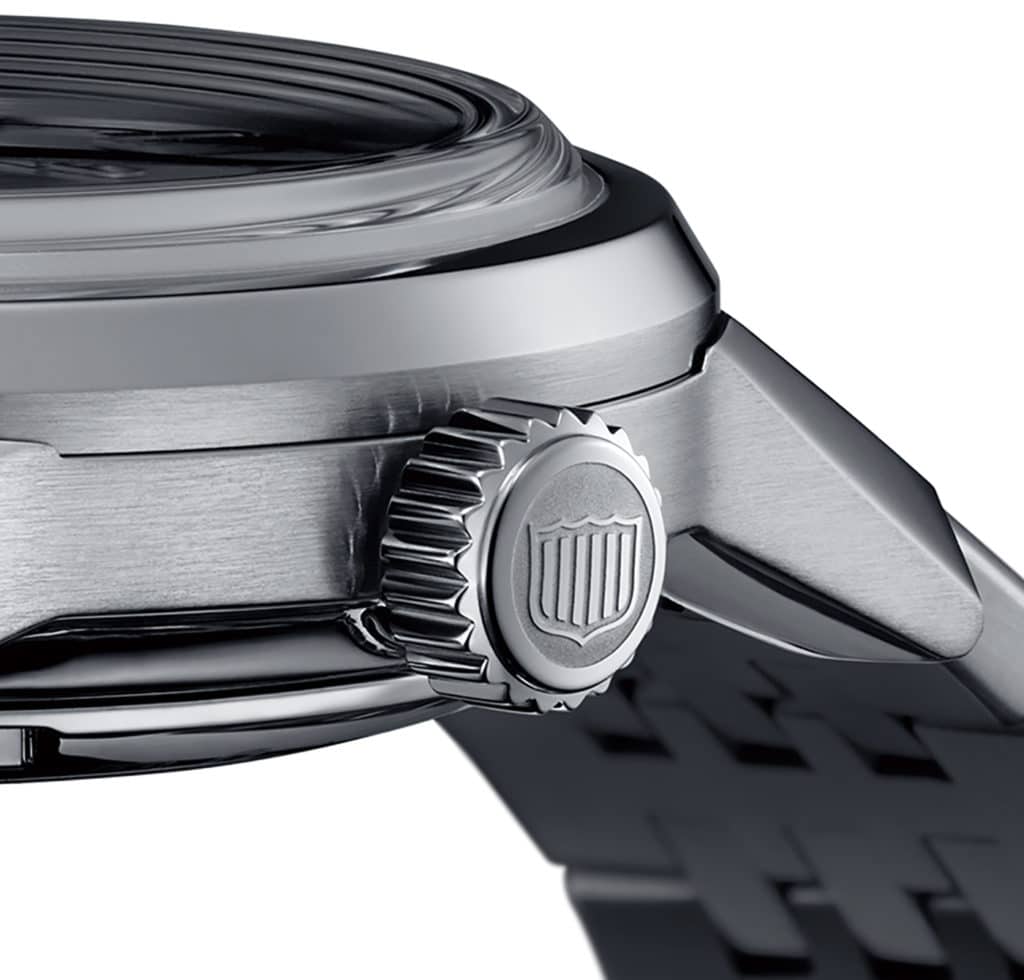
There are some who will be disappointed by the choice of movement in this watch. Indeed, there isn’t much exciting stuff to say about the 6R35 other than its substantial 70-hour power reserve. The use of an automatic movement rather than a more faithful hand-wound choice probably contributes to a thicker case (though greater waterproofing may also play a part here) and the +25/-15 second accuracy is hardly aspirational, though Seiko is generally very conservative in its accuracy estimates. However, the original model of this particular watch wasn’t exactly pushing the boundaries of horology either, with an 18,000bph movement ticking away while “lower” Seiko brand Lord Marvel was cranking out movements with double the beat rate even back then.
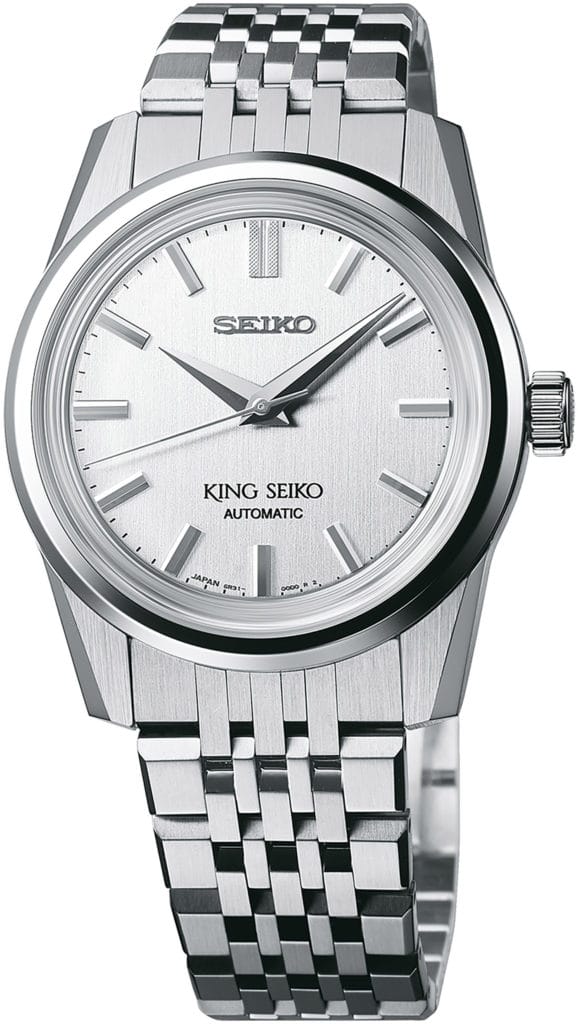
All told, this new series of King Seikos presents a puzzling move on Seiko’s part. At $1,700 on 19mm bracelet (the bracelets seem fine but not especially worthy of great mention at least until a hands-on review can be done) with what seem to be some strap options yet to be released, the watch doesn’t exactly scream value proposition but still presents reasonable value within the current Seiko lineup. It’s a dressy watch that will feel perfectly comfortable in almost any setting on almost any wrist, and offers a bit of fun with those new dial colours, especially that oxblood. Still, given its connection to the iconic KS 44-9990 that featured design elements still referenced by the very best Grand Seiko has to offer today, it’s a little sad to see that bold historic design toned down into what amounts to the latest sensible crossover SUV of horology.
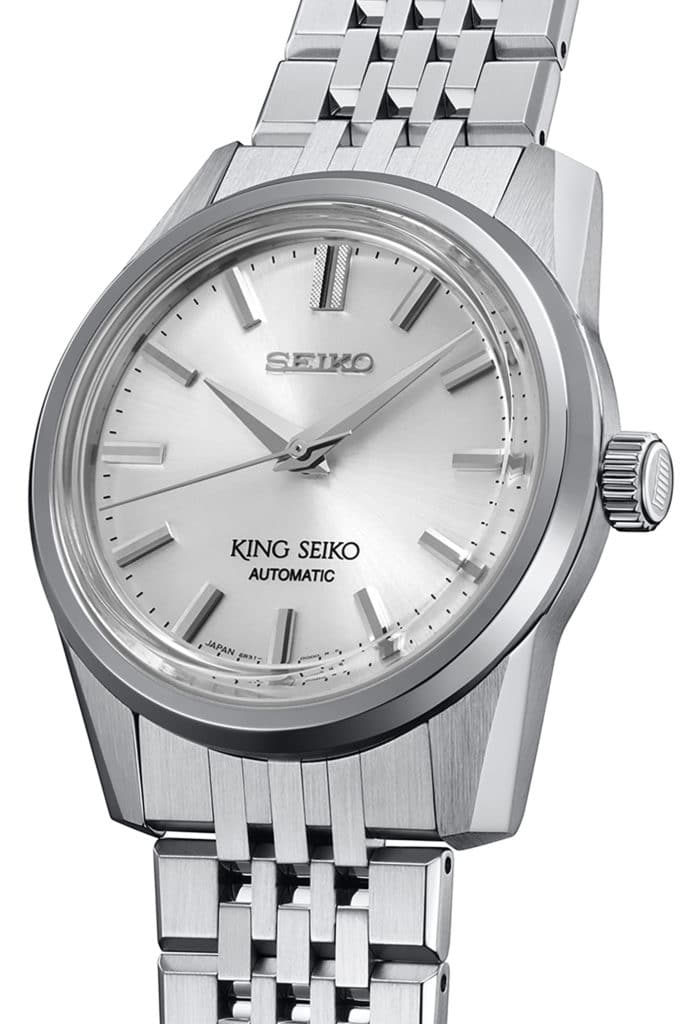
The new King Seiko models SPB279 (silver sunburst dial), SPB281 (silver brushed), SPB283 (charcoal sunburst), SPB285 (brown sunburst), SPB287 (oxblood sunburst) cost $1,700 in the United States and are expected to be available in February 2022.
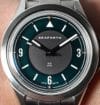
Ever since his first watch, a talking Dick Tracy thing won in a local chicken impersonation contest at age five, Aggressive Timing Habits has been fascinated by all watches from Amphibias to Zeniths and the people who create and collect them. His contributions to TBWS represent a new outlet to discuss the miracle of drilled lugs and debate the virtues of balance bridges vs balance cocks, much to the relief of friends and loved ones.
